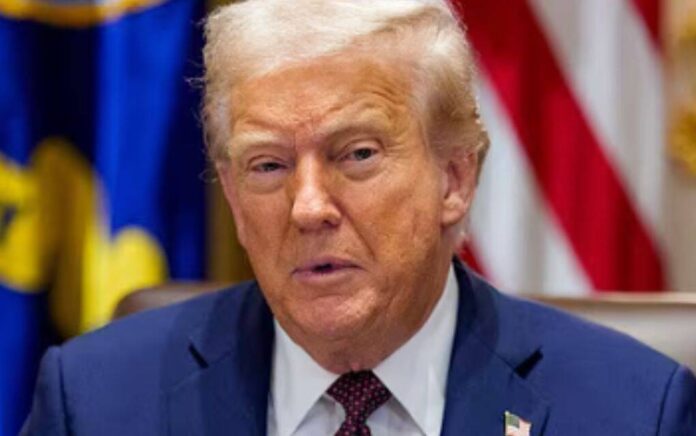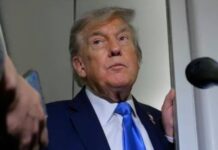
Donald Trump is the most popular man in the world. That also means he will have the most ardent enemies.
That’s why President Trump got sick to his stomach when this Secret Service report went public.
Secret Service Staffing Crisis Exposes Deep Flaws in Protecting America’s Leaders
A bombshell report from the Homeland Security Department’s inspector general has laid bare a dangerous shortfall in the U.S. Secret Service’s counter-sniper teams, leaving them woefully underprepared to safeguard the nation’s top officials. Released on Tuesday, the document highlights how chronic understaffing has forced the agency to rely on exhausted agents working endless overtime and even pulling in outsiders who don’t always measure up to the job’s demands.
The inspector general’s findings come amid ongoing fallout from the near-fatal shooting of President Donald Trump at a rally in Butler, Pennsylvania, back in July 2024. That incident, where a gunman nearly succeeded in taking out the leader of the free world, has become a stark example of how years of mismanagement have eroded the Secret Service’s once-ironclad reputation. Critics argue that bloated government red tape and politically driven priorities have turned what should be an elite force into a shadow of its former self, unable to keep pace with rising threats in a divided America.
“The United States Secret Service’s (Secret Service) Counter-Sniper Team (CS) is staffed 73 percent below the level necessary to meet mission requirements,” the report starkly warned. This shocking statistic means that for every three agents needed to cover critical vantage points, only one is actually on duty, creating massive gaps in security perimeters. In a world where lone wolves and organized plots against conservative figures like Trump are on the rise, such deficiencies invite disaster.
Worse still, the report drives home the potential consequences of this neglect. “Failure to appropriately staff CS could limit the Secret Service’s ability to properly protect our Nation’s most senior leaders, risking injury or assassination, and subsequent national-level harm to the country’s sense of safety and security.” Americans deserve better than an agency gambling with the lives of those who stand up against the establishment, especially when taxpayer dollars are supposed to fund top-tier protection.
To plug these holes, the Secret Service has turned to stopgap measures that scream incompetence. “Given its chronic understaffing, CS relied on overtime and leveraged personnel from other Department of Homeland Security components to meet mission requirements,” the report added. Between 2021 and 2024, the agency shelled out nearly a quarter million overtime hours just to keep the counter-sniper units afloat, burning through resources that could have gone toward hiring and training real professionals.
Even more alarming, during high-stakes events like the 2024 election cycle and Trump’s inauguration, the Secret Service borrowed marksmen from other federal outfits—some of whom fell short of the rigorous standards expected for such sensitive roles. This patchwork approach not only strains budgets but also dilutes the expertise needed to spot and neutralize threats before they escalate.
The report pulls no punches on the qualifications front. “Some counter snipers did not meet mandatory weapons requalification requirements,” the report warned. Agents who hadn’t proven their shooting skills in day or night conditions were still thrown into the mix, potentially compromising operations when precision matters most.
In fact, “Counter snipers who missed mandatory weapons requalification sessions (i.e., retesting their ability to shoot accurately in the daytime and at night), nonetheless supported 47 of the 426 events (11 percent) attended by protectees in calendar year 2024.” That’s over a dozen high-profile gatherings where subpar snipers were on watch, a recipe for tragedy in an era of emboldened radicals targeting patriotic leaders.
Flash back to July 13, 2024, in Butler, where these systemic issues boiled over into a near-catastrophe. A 20-year-old shooter, Thomas Crooks, climbed onto a rooftop just 150 yards from the stage, armed with an AR-15-style rifle. Despite being spotted as suspicious with a rangefinder nearly half an hour earlier, no one stopped him from firing eight rounds. Trump was grazed in the ear, while rally attendee Corey Comperatore was killed shielding his family, and two others were wounded.
Senate investigations revealed a cascade of Secret Service blunders that day: denied requests for extra counter-snipers, malfunctioning drones operated by rookies, and a total breakdown in communication with local police. Threat intelligence about a potential Iranian plot wasn’t shared with on-the-ground teams, and the lead agent was handling her first major outdoor event. It’s no wonder critics call it one of the most preventable attacks in modern history.
These failures didn’t happen in a vacuum—they stem from decades of expanding government bureaucracy that has bogged down the Secret Service with endless layers of red tape. Post-9/11 reforms under the George W. Bush administration shifted the agency into the Department of Homeland Security, piling on new missions like cyber threats and financial crimes without matching resources. The result? An overgrown federal beast where decisions crawl through committees, delaying hires and equipment upgrades essential for core protective duties.
Cultural politics have only made things worse, injecting divisive priorities that prioritize appearances over ability. Insiders point to “corrosive cultural attitudes” within the workforce, where complacency and outdated procedures have taken root amid pushes for diversity initiatives that some say lower standards for elite roles like counter-snipers. In a agency meant to be merit-based, these shifts have fostered morale problems and inefficiency, turning sharp operators into desk-bound bureaucrats more focused on checking boxes than stopping bullets.
Reports from independent panels echo this, describing the Secret Service as “bureaucratic, complacent, and static” despite multiplying risks from drones, social media radicalization, and foreign meddling. Political correctness has seeped in, with training and promotions sometimes swayed by identity politics rather than proven skill, weakening the chain of command and leaving gaps that enemies exploit.
Under the Biden era, these issues hit a boiling point, with resource denials for Trump’s campaign rallies despite known threats. Six agents were eventually suspended for the Butler fiasco, but senior leaders faced no real consequences—some even got promotions—highlighting how entrenched elites protect their own while frontline patriots take the fall.
The Trump administration’s Secret Service has acknowledged the report’s grim truths and vowed swift action to beef up staffing. But real change demands slashing the bureaucratic fat, refocusing on mission-critical tasks, and rooting out the cultural rot that’s made America’s guardians vulnerable. Until then, the safety of leaders who challenge the swamp remains in jeopardy, a chilling reminder of how far the deep state has strayed from its duty to protect the people.



















